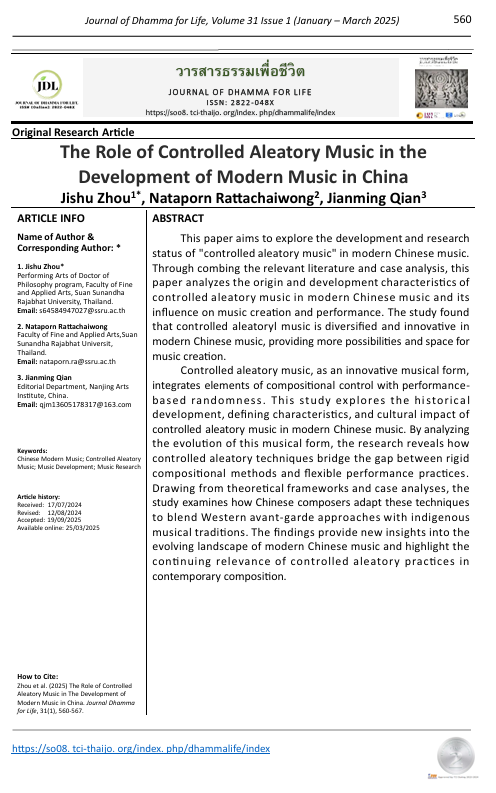The Role of Controlled Aleatory Music in the Development of Modern Music in China
Main Article Content
Abstract
This paper aims to explore the development and research status of "controlled aleatory music" in modern Chinese music. Through combing the relevant literature and case analysis, this paper analyzes the origin and development characteristics of controlled aleatory music in modern Chinese music and its influence on music creation and performance. The study found that controlled aleatoryl music is diversified and innovative in modern Chinese music, providing more possibilities and space for music creation.
Controlled aleatory music, as an innovative musical form, integrates elements of compositional control with performance-based randomness. This study explores the historical development, defining characteristics, and cultural impact of controlled aleatory music in modern Chinese music. By analyzing the evolution of this musical form, the research reveals how controlled aleatory techniques bridge the gap between rigid compositional methods and flexible performance practices. Drawing from theoretical frameworks and case analyses, the study examines how Chinese composers adapt these techniques to blend Western avant-garde approaches with indigenous musical traditions. The findings provide new insights into the evolving landscape of modern Chinese music and highlight the continuing relevance of controlled aleatory practices in contemporary composition.


